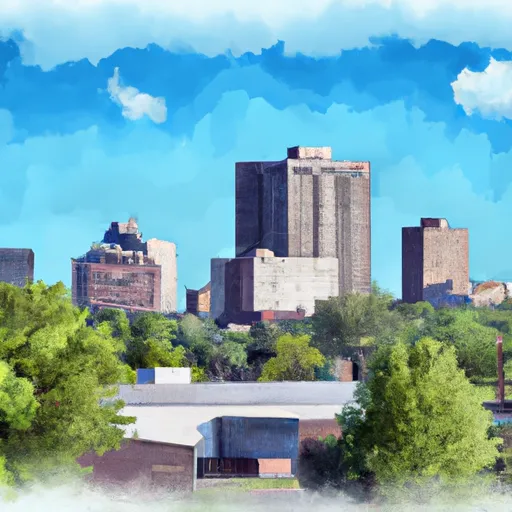-
 Snoflo Premium
Snoflo Premium
Get unlimited access to all our content
With no Ad interruptions! - Start Your Free Trial Login with existing account
Sunburg
Eden Index
Climate
6.1
•
Recreation
1.7
•
Community
•
Safeguard
3.1/10

Sunburg, Minnesota, is a charming small town nestled in Kandiyohi County. Known for its picturesque beauty, Sunburg experiences a typical Midwest climate characterized by warm summers and cold winters. Summers bring average temperatures ranging from 70-80°F, perfect for outdoor activities. Winters, on the other hand, are colder with temperatures dipping down to 10-20°F and an average snowfall of around 30 inches.
The town is surrounded by various hydrology constituents, including lakes and rivers. Nestled near the shore of Lake Minnewaska, residents and visitors can indulge in a range of water activities such as boating, fishing, and swimming. The lake's clear waters are home to various fish species, including walleye, northern pike, and bass, making it a popular spot for fishing enthusiasts.
In addition to Lake Minnewaska, Sunburg is also in close proximity to other lakes like Norway Lake and Games Lake, offering more opportunities for water-based recreation. These lakes provide excellent conditions for canoeing, kayaking, and paddleboarding.
For those seeking outdoor recreation on land, Sunburg offers numerous trails for hiking and biking, allowing visitors to explore the town's beautiful landscapes. The nearby Sibley State Park is a haven for nature lovers, featuring stunning prairies, forests, and lakes, along with camping facilities for overnight stays.
In conclusion, Sunburg, Minnesota, offers a delightful combination of a Midwest climate, abundant hydrology constituents, and an array of outdoor recreation opportunities. Whether engaging in water activities on the lakes or exploring the scenic trails, visitors and residents alike can enjoy the natural beauty that surrounds this charming town.
What is the Eden Index?
The Snoflo Eden Index serves as a comprehensive rating system for regions, evaluating their desirability through a holistic assessment of climate health, outdoor recreation opportunities, and natural disaster risk, acknowledging the profound impact of these factors on livability and well-being.
Climate Health Indicator (CHI): 6.1
Sunburg receives approximately
698mm of rain per year,
with humidity levels near 84%
and air temperatures averaging around
7°C.
Sunburg has a plant hardyness factor of
4, meaning
plants and agriculture in this region thrive during a short period during spring and early summer. Most
plants will die off during the colder winter months.
By considering the ideal temperature range, reliable water supplies, clean air, and stable seasonal rain or snowpacks, the Climate Health Indicator (CHI) underscores the significance of a healthy climate as the foundation for quality living.
A healthy climate is paramount for ensuring a high quality of life and livability in a region, fostering both physical well-being and environmental harmony. This can be characterized by ideal temperatures, reliable access to water supplies, clean air, and consistent seasonal rain or snowpacks.
Weather Forecast
Streamflow Conditions
Minnesota
Area Rivers
Minnesota
Snowpack Depths
Minnesota
Reservoir Storage Capacity
Minnesota
Groundwater Levels
Recreational Opportunity Index (ROI): 1.7
The Recreational Opportunity Index (ROI) recognizes the value of outdoor recreational options, such as parks, hiking trails, camping sites, and fishing spots, while acknowledging that climate plays a pivotal role in ensuring the comfort and consistency of these experiences.
Access to outdoor recreational opportunities, encompassing activities such as parks, hiking, camping, and fishing, is crucial for overall well-being, and the climate plays a pivotal role in enabling and enhancing these experiences, ensuring that individuals can engage in nature-based activities comfortably and consistently.
Camping Areas
| Campground | Campsites | Reservations | Toilets | Showers | Elevation |
|---|---|---|---|---|---|
| Bertha City Park | None | 1,400 ft | |||
| Sailors and Soldiers Memorial Park | 24 | 1,035 ft | |||
| Sunnybrook Park | 38 | 1,343 ft | |||
| Hungryman Lake- Two Inlets State Forest | 14 | 1,501 ft | |||
| Itasca State Park | 225 | 1,485 ft | |||
| Wolf Lake City Campground | 14 | 1,540 ft | |||
| Memorial Park - Olivia | 6 | 1,071 ft | |||
| Memorial Forest Park - Menahga | 24 | 1,396 ft | |||
| Beaver Falls Co Park | None | 869 ft | |||
| Alexander Ramsey Park | 31 | 1,019 ft |
Nearby Fishing
Catastrophe Safeguard Index (CSI):
The Catastrophe Safeguard Index (CSI) recognizes that natural disaster risk, encompassing floods, fires, hurricanes, and tornadoes, can drastically affect safety and the overall appeal of an area.
The level of natural disaster risk in a region significantly affects safety and the overall livability, with climate change amplifying these risks by potentially increasing the frequency and intensity of events like floods, fires, hurricanes, and tornadoes, thereby posing substantial challenges to community resilience and well-being.
Community Resilience Indicator (CRI):
The Community Resilience Indicator (CRI) recognizes that education, healthcare, and socioeconomics are crucial to the well-being of a region. The CRI acknowledges the profound impact of these elements on residents' overall quality of life. By evaluating educational resources, healthcare accessibility, and economic inclusivity, the index captures the essential aspects that contribute to a thriving community, fostering resident satisfaction, equity, and social cohesion.

